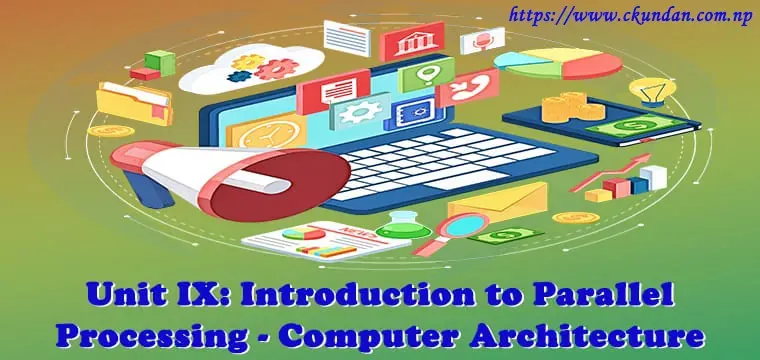Parallel processing can be described as a class of techniques which enables the system to achieve simultaneous data-processing tasks to increase the computational speed of a computer system.
In this “Introduction to Parallel Processing - Computer Architecture” you will learn about following topics:
- Parallel Processing
- Parallelism in Uniprocessor System
- Multiprocessor Systems
- Advantages of Multiprocessor Systems
- Disadvantages of Multiprocessor Systems
- Flynn’s Classification
- Single Instruction, Single Data (SISD) Systems
- Single Instruction, Multiple Data (SIMD) Systems
- Multiple Instruction, Single Data (MISD) Systems
- Multiple Instruction, Multiple Data (MIMD) Systems
- Interconnection Structures in Multiprocessors
- Time Shared Common Bus
- Multiport Memory
- Crossbar Switch
- Multistage Switching Network
- Hypercube Interconnection
- Cache Coherence
- Cache Write Policies
- Write Back (WB)
- Write Through (WT)
- Solution of Cache Coherence Problem
- Software Level Solution - Compiler-Based Cache Coherence Mechanism
- Hardware Level Solutions
- Introduction to Vector Processing and Array Processors
- Introduction to Multithreaded Architecture
- Features of Multithreaded Architecture
==== Point to Note ====
If you like to contribute, you can mail us BCA Notes, BCA Question Collections, BCA Related Information, and Latest Technology Information at [email protected].
See your article appearing on BCA Notes (Pokhara University) main page with your designation and help other BCA Students to excel.
Please write comments if you find anything incorrect, or you want to share more information about the topic discussed above.
BCA 5th Semester Computer Architecture Notes Pdf:
- Unit I: Introduction To Computer Architecture And Organization
- Unit II: Register Transfer And Micro Operations
- Unit III: Central Processing Unit (CPU)
- Unit IV: Computer Arithmetic
- Unit V: Control Unit (CU)
- Unit VI: Memory Organization
- Unit VII: Input/Ouput Organization
- Unit VIII: Reduced Instruction Set Computer (RISC)
- Unit X: Multicore Computers








0 Comments